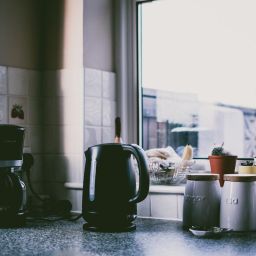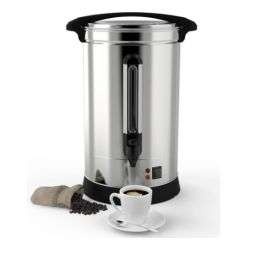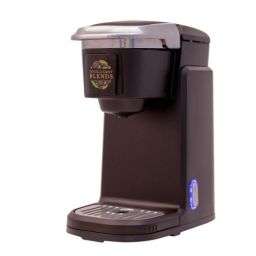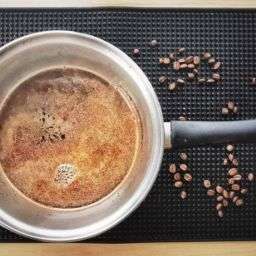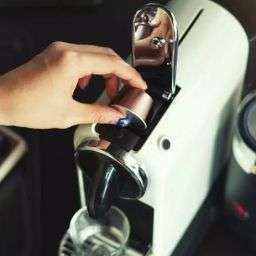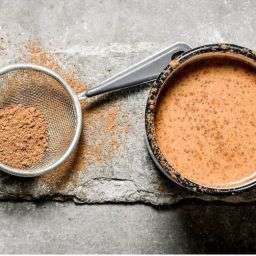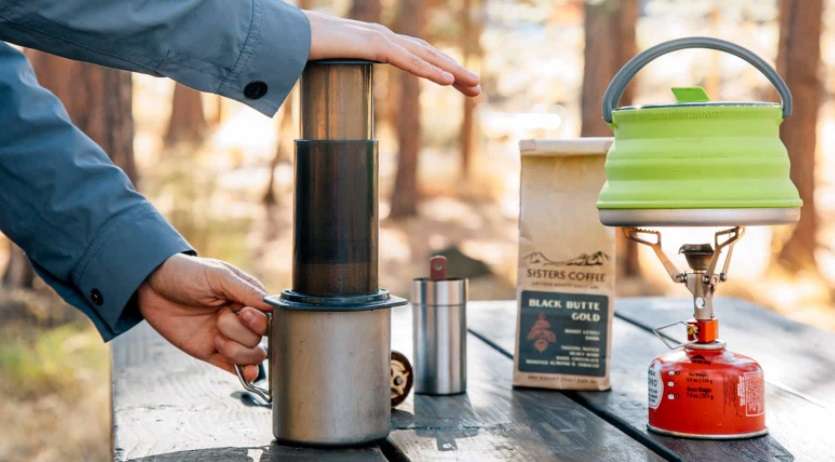
Brewing coffee while camping is essential, blending convenience with tradition. Modern camping coffee pots offer efficiency and design suitable for outdoor use. This guide covers choosing, using, and maintaining camping coffee pots, aiming for the best coffee experience outdoors. It focuses on selecting the right pot, brewing techniques, and maintenance to ensure longevity.
Key Takeaways
Choosing the right camping coffee pot is crucial for your outdoor adventures. The material, size, and brewing method can significantly impact your coffee experience. Whether it’s the lightweight and durable stainless steel, the classic charm of enamelware, or the quick heat conduction of aluminum, each has its pros and cons. Size matters based on your group, and the brewing method should suit your personal taste and camping style.
- Assemble: Start by putting together your coffee pot. This might include setting up the filter basket and ensuring everything is securely in place.
- Measure: Accurately measure your water and coffee grounds. The quality of coffee beans and the cleanliness of your water significantly influence the taste.
- Grind Size: The grind size of your beans should match your brewing method, affecting the extraction rate and, ultimately, the flavor.
- Brewing Process: Whether you’re using a stovetop or a campfire, the brewing process is an art. The key is to maintain the right temperature and to monitor the brewing time closely. For stovetop users, controlling the heat is simpler and allows for a steady percolation. Campfire enthusiasts, however, face the challenge of adjusting the coffee pot’s placement for even heat distribution.
- Achieving the Perfect Brew: A perfect brew is about balancing the strength and flavor of your coffee. Factors like the coffee-to-water ratio, brewing time, and even the addition of a pinch of salt to the grounds can make all the difference. Experimenting with these variables can help you achieve your ideal cup of coffee, tailored to your taste.
- Adaptability to Heat Sources: Camping coffee pots are versatile, designed to work well over various heat sources. The choice between a campfire and a stovetop affects how you control the brewing process. Each method requires adjustments to ensure your coffee doesn’t taste burnt or under-extracted. The key is finding the right spot for your campfire or adjusting the flame on your stove to keep the brewing process gentle and even.
Selecting Your Camping Coffee Pot
The journey of camping coffee pots from simple beginnings to modern marvels is fascinating. Initially designed for simplicity and durability, they have evolved to balance tradition with the practicality and efficiency of today’s outdoor adventures.
When selecting a camping coffee pot, consider not just the material—whether it’s enamelware for its nostalgic charm, aluminum for its lightweight and heat conductivity, or stainless steel for its unmatched durability—but also design features tailored for outdoor use. Each material has its unique benefits, so think about your camping style and what you prioritize in your coffee brewing experience.
Preparing to Brew
Before you dive into brewing, assembling your pot correctly is key. Start by ensuring all parts of your coffee pot are clean and fit together snugly. The assembly process typically involves setting up the filter basket inside the pot. If your pot includes a percolator, ensure the central tube is correctly placed and the filter basket is ready for the coffee grounds.
Measuring Water and Coffee
The ratio of water to coffee is critical for achieving the perfect brew. As a general rule, aim for about two tablespoons of coffee per six ounces of water. However, this can vary based on personal taste. Use the cups you’ll be drinking from to measure the water, adding an extra cup to account for evaporation during brewing. Remember, the quality of water used can significantly affect the taste, so opting for clean, filtered water is best.
Adjusting for Grind Size and Freshness
The grind size of your coffee should match your brewing method. Coarse grinds work best for French presses and percolators, while finer grinds are suitable for drip coffee makers. Freshness is also paramount—freshly ground coffee beans will produce a more aromatic and flavorful cup. Investing in a good grinder and grinding your beans right before brewing can make a world of difference.
Importance of High-Quality Beans and Water
The choice of coffee beans is as crucial as the brewing process itself. Opt for high-quality beans that suit your taste preferences, and consider trying different roasts to find your favorite. The water you use is equally important; hard or chlorinated water can alter the taste of your coffee. Using filtered or bottled water can ensure that your coffee tastes as good as possible, letting the rich flavors of the beans shine through.
Brewing Process
Stovetop Brewing
- Assemble your coffee pot, ensuring all parts are clean and correctly positioned.
- Fill the pot with water to just below the valve or, if your pot doesn’t have one, about an inch from the top.
- Add your coffee grounds to the filter basket. A good starting point is one tablespoon per cup of water.
- Place the pot on the stove and turn the heat to medium. Watch as the water heats and begins to move through the coffee grounds.
- Once brewing starts, lower the heat slightly to maintain a gentle brew without boiling over.
- Monitor the brew. For most pots, the brewing process should take about 5-10 minutes. Adjust the flame to keep the process steady without overheating the coffee.
Campfire Brewing
- Prepare your coffee pot as described above for stovetop brewing.
- Place the pot on a grate over your campfire, ensuring it’s stable and level. If you don’t have a grate, find a flat stone or a bed of coals that provide a steady heat source.
- Adjust the pot’s position to control the heat. Unlike a stove, managing the heat from a campfire is about moving the pot closer or further from the flame.
- Watch for the brewing signs, like steam and the aroma of coffee. The process might be quicker or slower depending on your fire, so stay attentive.
Achieving the Perfect Brew
Adjusting Coffee Strength: Experiment with the coffee-to-water ratio. More coffee will result in a stronger brew, while less coffee makes a milder cup.
Adjust brewing time. Longer brewing times extract more flavor but can lead to bitterness if overdone. Start with 5 minutes and adjust to taste.
Avoiding Common Mistakes: Don’t let the coffee boil. This can make your brew bitter. Keep the heat moderate to maintain a gentle percolation.
Keep an eye on the water level, especially on a campfire. It’s easy to evaporate too much water and end up with overly strong or burnt coffee.
The Role of Coffee Bean Choice, Water Quality, and Grind Size: Bean choice is foundational. Experiment with different roasts and origins to find what flavors you enjoy most.
Water quality can’t be overstated. Bad tasting water leads to bad tasting coffee. Use filtered or bottled water if possible.
Grind size affects extraction. A coarse grind is generally best for camping coffee pots, especially percolators. It allows water to flow through the grounds effectively without over-extracting and becoming bitter.
Maintaining Your Camping Coffee Pot
Keeping your camping coffee pot in top condition is simpler than you might think. After each use, rinse it out with hot water to remove any coffee grounds and oils. For a deeper clean, especially after a long trip, use a mild detergent and a soft brush or sponge.
Avoid using anything abrasive that might scratch the surface. To prevent buildup, occasionally descale the pot by filling it with a mixture of equal parts water and vinegar, boiling, then rinsing thoroughly. Proper maintenance ensures your coffee tastes great and extends the life of your pot.
FAQs
How long should I percolate coffee?
Typically, 5 to 10 minutes is ideal for a balanced brew. Adjust based on your taste preference for strength and bitterness.
Does camp coffee contain caffeine?
Yes, unless specifically using decaffeinated beans. Traditional camp coffee made from regular coffee beans contains caffeine.
How do I take coffee with me when camping?
Opt for whole beans and grind them fresh at your campsite if possible. Store your coffee in a sealed, airtight container to protect it from moisture and preserve its freshness.
Final Thoughts
Embracing the ritual of brewing coffee in the great outdoors bridges the gap between tradition and modern convenience. Whether you’re using a vintage percolator over an open flame or a sleek, modern pot on a camp stove, the process connects you to the simplicity and beauty of nature. With a little care and the right techniques, you can elevate your camping experience, one cup of coffee at a time.



